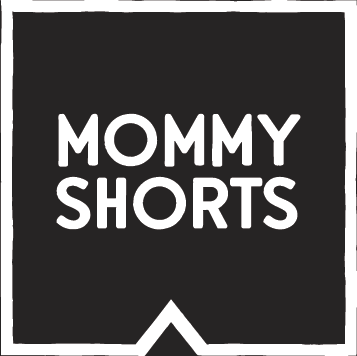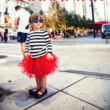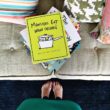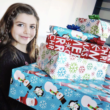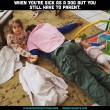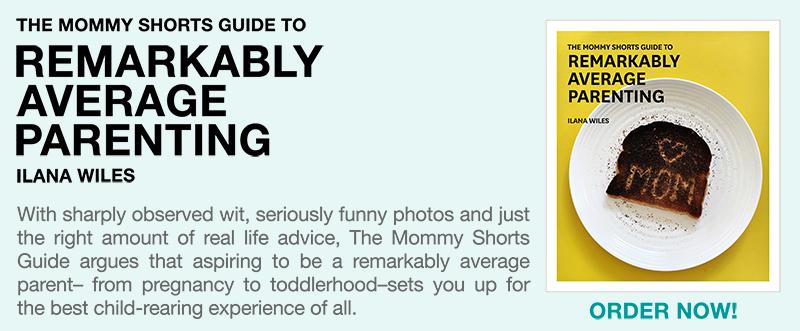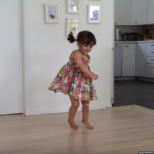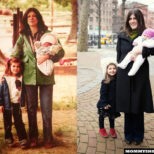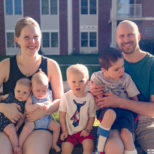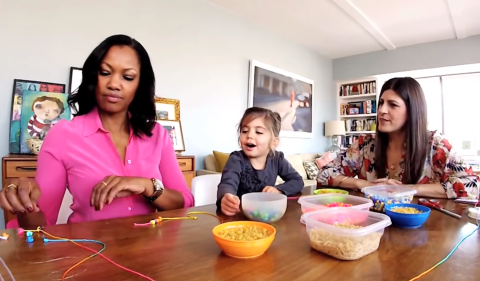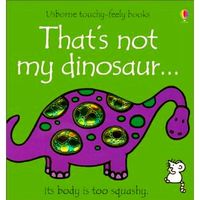 Dr. B (AKA my sister) has a doctorate in school psychology specializing in early childhood development. Last week she taught us how to delve deeper into the game of peek-a-boo and less than a week later, Mazzy has started playing without any help from me whatsoever. No joke— she grabs her blankie, holds it in front of her face, pauses, and then wisks it away with a big smile. This week Dr. B is helping us read to our babies in a way that will more likely lead to early learning experiences. Purchasing the entire Madeline series, as I did, because you remembered how much you liked those books as a kid, is perhaps not the best way to start your baby's storytime education. I learned this as soon as I found myself introducing the concepts of "burglary" and "death" to my baby girl. (Reread them, you'll see). Dr. B says reading helps expose babies to information that is not in their immediate environment, but I'm guessing she wasn't talking about things like stealing and dying. Studies show that babies who are read to at an early age often learn to speak earlier, have a larger vocabulary by the time they enter preschool, and have an easier time learning how to read and write. So pay attention, because Dr. B knows what's gonna get your child that coveted spot in the Baby Genius Playgroup (that's not a real thing— stop putting so much pressure on them!)
Dr. B (AKA my sister) has a doctorate in school psychology specializing in early childhood development. Last week she taught us how to delve deeper into the game of peek-a-boo and less than a week later, Mazzy has started playing without any help from me whatsoever. No joke— she grabs her blankie, holds it in front of her face, pauses, and then wisks it away with a big smile. This week Dr. B is helping us read to our babies in a way that will more likely lead to early learning experiences. Purchasing the entire Madeline series, as I did, because you remembered how much you liked those books as a kid, is perhaps not the best way to start your baby's storytime education. I learned this as soon as I found myself introducing the concepts of "burglary" and "death" to my baby girl. (Reread them, you'll see). Dr. B says reading helps expose babies to information that is not in their immediate environment, but I'm guessing she wasn't talking about things like stealing and dying. Studies show that babies who are read to at an early age often learn to speak earlier, have a larger vocabulary by the time they enter preschool, and have an easier time learning how to read and write. So pay attention, because Dr. B knows what's gonna get your child that coveted spot in the Baby Genius Playgroup (that's not a real thing— stop putting so much pressure on them!)
1) Start reading to your baby as early as possible.
2) Find books made from durable materials (board books, vinyl books, cloth books) because you want your baby to be free to fully interact with the book, even if that means chewing on the corners and pulling on the pages.
3) Read books that offer different tactile experiences like textures, cut-outs and flaps. Babies begin to notice and seek out textures at around five months.
4) Choose books with large pictures and bright contrasting colors, especially in the first few months when your baby is not able to see the full color spectrum.
5) Babies love to see other babies so if possible, find a book that uses large photographs of babies.
6) At this age, you do not need to read the exact words as they appear on the page. In fact, it may be even more beneficial to make up a story that more closely goes along with the pictures.
7) Let your baby hold the book and encourage her to touch and turn the pages. Babies learn to turn pages themselves at around eight months.
8) While reading, point to and name different objects. Ask questions to see if your baby can recognize the pictures. Babies will begin pointing to objects themselves at around ten months.
9) Use as many different emotions, facial expressions and expressive sounds as possible because it helps keep the baby engaged and promotes social development.
10) Repeat the same books over and over to improve comprehension and to give your baby more of an opportunity to remember the new words that are introduced in the story.
Check out Dr. B's section of the Mommy Shorts Shop because Dr. B has added more recommended toys.
